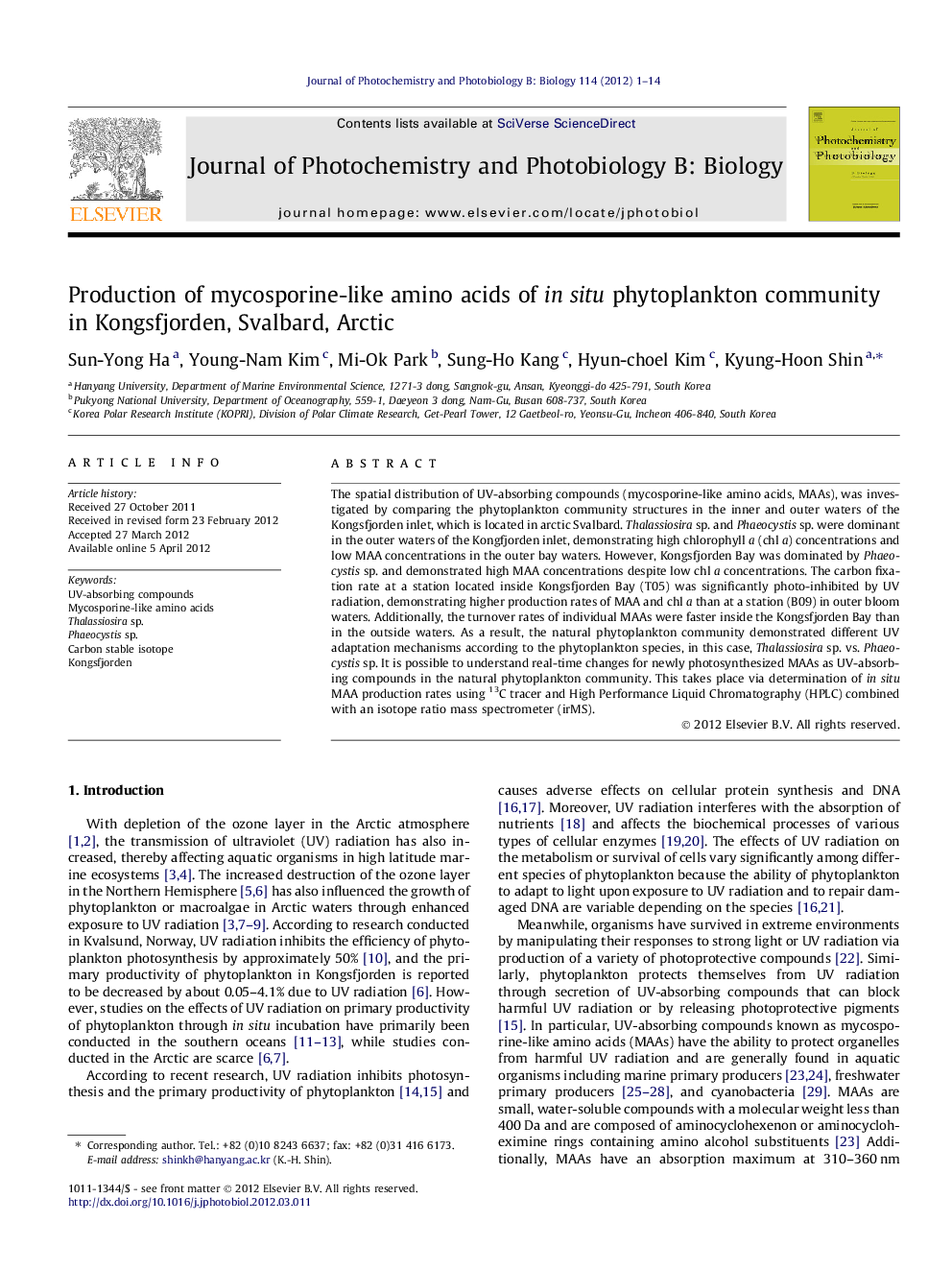| Article ID | Journal | Published Year | Pages | File Type |
|---|---|---|---|---|
| 30736 | Journal of Photochemistry and Photobiology B: Biology | 2012 | 14 Pages |
The spatial distribution of UV-absorbing compounds (mycosporine-like amino acids, MAAs), was investigated by comparing the phytoplankton community structures in the inner and outer waters of the Kongsfjorden inlet, which is located in arctic Svalbard. Thalassiosira sp. and Phaeocystis sp. were dominant in the outer waters of the Kongfjorden inlet, demonstrating high chlorophyll a (chl a) concentrations and low MAA concentrations in the outer bay waters. However, Kongsfjorden Bay was dominated by Phaeocystis sp. and demonstrated high MAA concentrations despite low chl a concentrations. The carbon fixation rate at a station located inside Kongsfjorden Bay (T05) was significantly photo-inhibited by UV radiation, demonstrating higher production rates of MAA and chl a than at a station (B09) in outer bloom waters. Additionally, the turnover rates of individual MAAs were faster inside the Kongsfjorden Bay than in the outside waters. As a result, the natural phytoplankton community demonstrated different UV adaptation mechanisms according to the phytoplankton species, in this case, Thalassiosira sp. vs. Phaeocystis sp. It is possible to understand real-time changes for newly photosynthesized MAAs as UV-absorbing compounds in the natural phytoplankton community. This takes place via determination of in situ MAA production rates using 13C tracer and High Performance Liquid Chromatography (HPLC) combined with an isotope ratio mass spectrometer (irMS).
► Newly photosynthesized MAAs in the natural phytoplankton community is determined. ► Phaeocystis sp. demonstrated the high concentration and production rate of MAAs. ► UV adaptation process of in situ phytoplankton community is clarified in subarctic.
